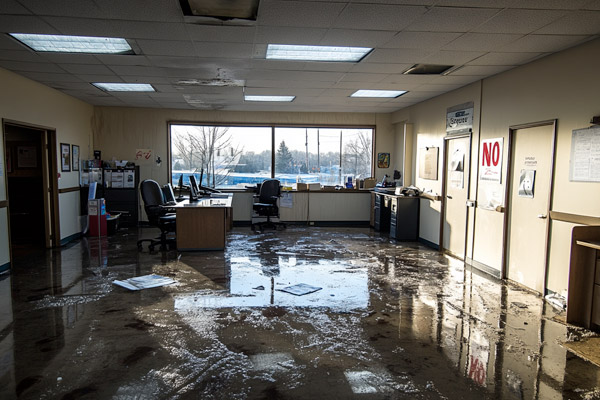Water Damage Assessment in Orange County & Anaheim

Water rarely announces its arrival—it seeps in quietly, sometimes hiding behind drywall or under flooring, and by the time you spot a stain or warped board, the real trouble has already started with mold, rot, and structural damage. Our team works with Orange County and Anaheim property owners to pinpoint where water entered, how far it traveled, and what needs attention before things spiral out of control. Whether you're dealing with a slow drip or a sudden flood, we walk every inch, check the materials, and lay out exactly what's happening inside your walls and floors.
What We Look for When Water Damage Starts
Sometimes, the first clue is subtle—a faint stain on the ceiling, a musty odor that lingers, or paint that starts to bubble near a window. Other times, the floor feels soft in one spot, or you spot mold creeping along a baseboard. These aren't just cosmetic issues. They're signals that water has found a way in and isn't leaving on its own.
- Discoloration on Walls or Ceilings: Yellow or brown marks that keep spreading, often after storms or plumbing use.
- Peeling or Bubbling Paint: Moisture trapped beneath the surface pushes paint away, leaving blisters or flakes.
- Warped or Soft Flooring: Wood, laminate, or tile that shifts or feels spongy underfoot, hinting at hidden moisture.
- Musty or Damp Odors: Persistent smells that don't fade, even after cleaning, usually point to water trapped out of sight.
- Visible Mold Growth: Dark spots or fuzzy patches, especially near sinks, corners, or along baseboards.
These signs don't always spell disaster, but they do mean it's time to take a closer look. Water can sit behind surfaces for weeks, quietly spreading. The sooner you get answers, the easier it is to contain the damage and avoid bigger repairs in Orange County and Anaheim properties.
How We Uncover Hidden Water Issues
Surface checks only tell part of the story, so our assessments go deeper, using moisture meters, thermal imaging, and hands-on inspection to map out exactly where water has traveled and what's at risk. Every property brings its own challenges—a bathroom leak might stay in one spot, while a roof problem can send water across several rooms—so we trace the source, check moisture levels in walls and floors, and provide a clear report. That documentation is essential if you're working with insurance or planning repairs, because we don't just guess—we measure, document, and explain what can be saved.
Why Material Testing Matters in Every Assessment
When water gets into a building, not every material reacts the same way. For example, drywall soaks up moisture quickly and can lose its strength, while wood swells and warps, and concrete can hold water for months without obvious signs. By testing each material, we find out what's truly wet and what's still sound, even if it looks fine on the outside.
- Drywall and Plaster: Absorbs water fast and can weaken if left damp for too long.
- Wood Framing and Subflooring: Swells, warps, and becomes a mold risk when moisture lingers.
- Insulation: Stops working when wet and can trap moisture against other materials.
- Concrete and Masonry: Holds onto water, leading to slow, hidden damage that's easy to miss.
- Carpet and Padding: Soaks up water quickly and can start to smell or grow mold within days.
We check moisture levels in each area, so you know what can stay and what needs to go. This approach keeps repairs focused and avoids unnecessary demolition.
Pinpointing and Managing Water Damage
With water, the entry point isn't always obvious—a burst pipe, slow leak, damaged roof, or even a small crack in a window seal can let moisture creep inside, and plumbing failures like leaking water heaters, cracked supply lines, or worn-out appliances are especially common culprits. We track down these sources and give you a full overview of the damage, documenting everything with photos, moisture readings, and a clear explanation of what's urgent and what can wait. This report gives you what you need for insurance or restoration work, so you can move forward with confidence knowing exactly what's damaged and why.



